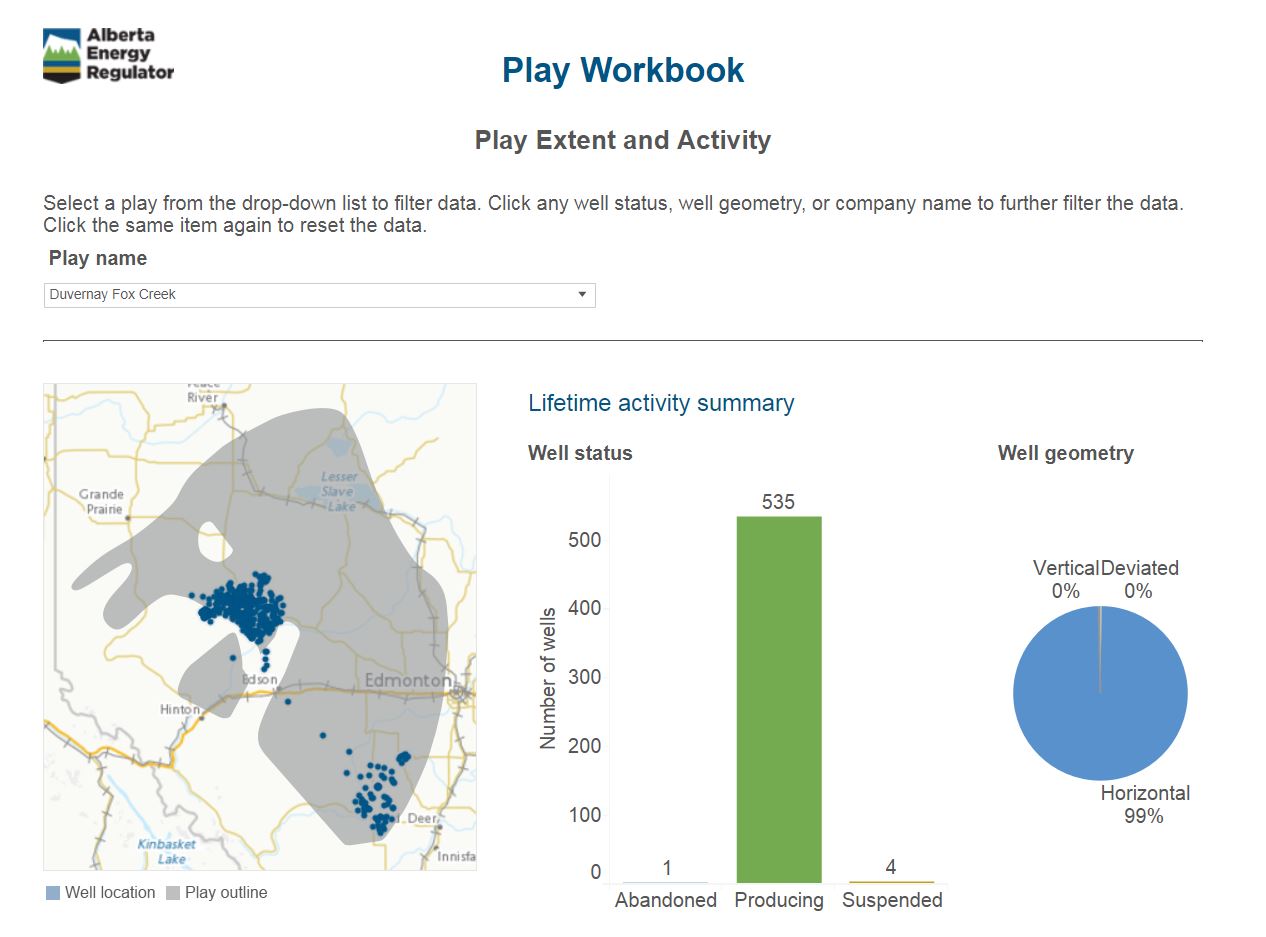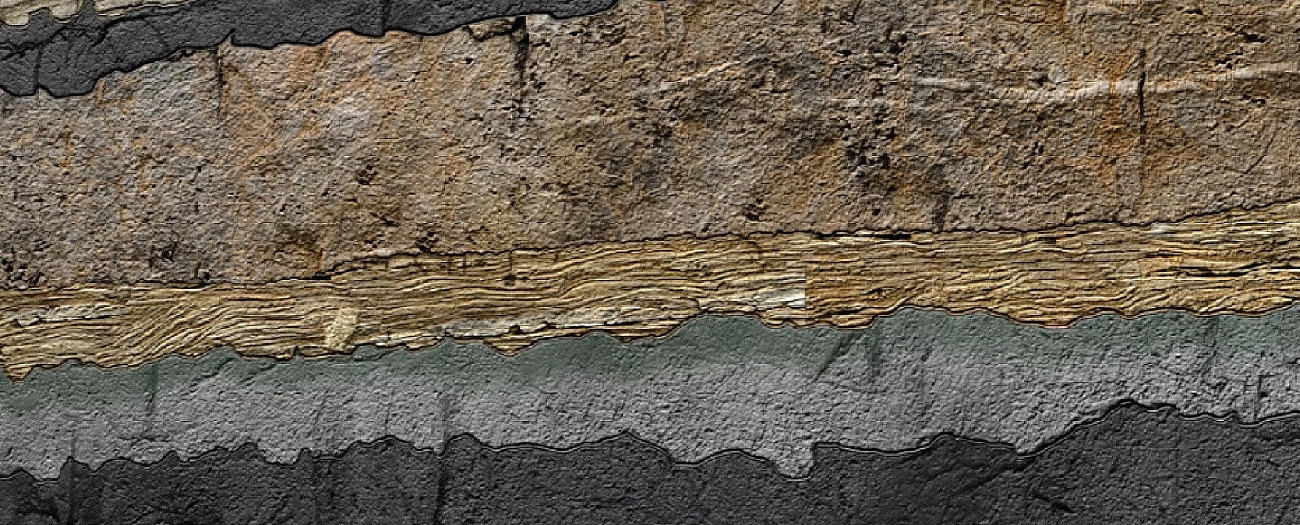The AER launches a report that gets to the heart of Alberta’s geological plays
Alberta - March 11, 2019When it comes to data, our reserves are deep—but the earth’s oil and gas reserves are even deeper.
To help Albertans get a glimpse at what’s going on under the surface, the Alberta Energy Regulator (AER) has created the Play Workbook, an interactive report that contains information about drilling activity, reserves, and companies working around the province.
The AER uses this data to assess regional energy activity and its associated social, economic, and environmental effects.
“This really marks a milestone in the way we use data,” says Erin Wadsworth, a data and intelligence analyst in the AER’s Science & Evaluation Branch. Using this information to better understand the ground beneath our feet, the AER can identify regional engagement opportunities, inform policy, and direct monitoring activities and inspections.

A snapshot of the Play Extent and Activity tab of the Play Workbook, an interactive report that allows users to refine data by selecting criteria such as well status or company name.
Here are five things you need to know about this report:
- Data, data, data: The AER has been independently appraising Alberta’s energy resources since 1961, giving us a thorough understanding of where our resources are, how they’re produced, and how they’re used.
- Waiting for the information to change: The data found in the Play Workbook expands on that released in the AER’s annual reserves and supply report. Like the reserves and supply report, the Play Workbook will be updated annually. Currently, the workbook includes data up to December 31, 2017.
- Diving into details: The workbook is brimming with information and includes three tabs: Play Extent and Activity, which includes information about the geology, well status, and number of producing wells; Play Reserves and Production, which summarizes the produced and remaining reserves by region; and Play Well Status, which summarizes the well status, history, and well counts by operator.
- Showing the big picture: To categorize the information available to us, we divide our hydrocarbon-rich landscape into geological plays: resource groupings based on similar geological characteristics that can stretch over vast geographic areas. The Play Workbook contains data for 120 plays in Alberta.
- Click away: The Play Workbook is completely interactive. You click, and it goes, summoning new maps from the digital depths and narrowing information down based on the selections you make within the tool.
If you have questions about the Play Workbook, please email @email.
Natalie Brodych, Writer


